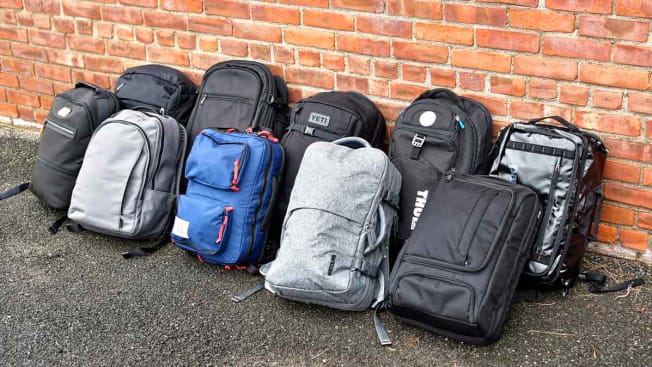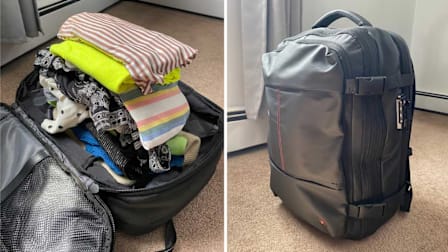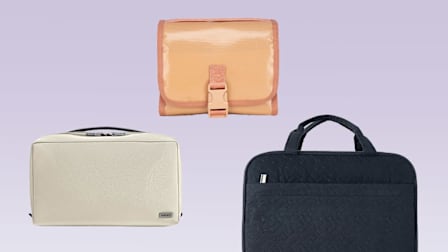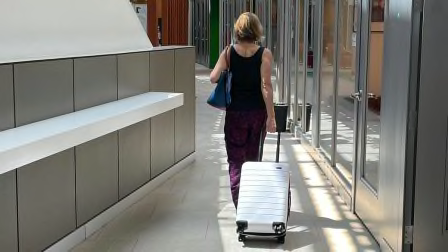If there’s any benefit to all those hours (months? years!) flying, it’s knowing how to pack and what to bring. Rule No. 1: Choose merino wool, because it’s comfy, not scratchy, and doesn’t retain body odors, which is key because the clothes you pack probably won’t see a washing machine for a while. Rule No. 2: Lay everything out beforehand. This allows you to edit what you pack—by sacrificing wants in favor of needs—and strategize about what to put where within your bag of choice, so it’s easier to find that eyeshade, Nyquil, or novel when you’re exhausted and the cabin lights are out on your red-eye.
Which brings me to Rule No. 3: Never check a bag. Ever!
That means everything you take with you should fit in two bags—a roll-aboard and a “personal item,” airline parlance for the purse, briefcase, shoulder bag, or backpack that stays with you during the flight. Pulling off proper two-bag travel requires a combination of tactical savvy and the right gear. I’ve managed trips as long as two weeks by wearing hiking boots onto the plane (so they eat less room in my bags) and taking only one other pair of footwear—running shoes, which do triple duty for exercise, daily use, and slightly more “formal” wear when matched with jeans and a blazer.
As for the gear? A good roller bag is important, but it’s ultimately the personal item that can make or break your trip. That bag needs to offer maximum utility and flexibility, and to that end, nothing beats a travel backpack. The genius of these bags is that they can accommodate far more stuff—and in a much more organized way—than a purse or briefcase. But some backpacks make better travel companions than others. That’s why I took a look at 10 of them. (See how I evaluated each of these travel backpacks, below.)





















